Key takeaways
- HTML is fundamental for structuring content on the web, making it essential for anyone interested in web development.
- W3Schools provides a user-friendly learning experience with a step-by-step approach and an interactive “Try It Yourself” editor for hands-on practice.
- Breaking down lessons into manageable pieces and revisiting topics enhances understanding and retention.
- Practical projects and exercises foster engagement and confidence, allowing learners to apply concepts in a personal way.
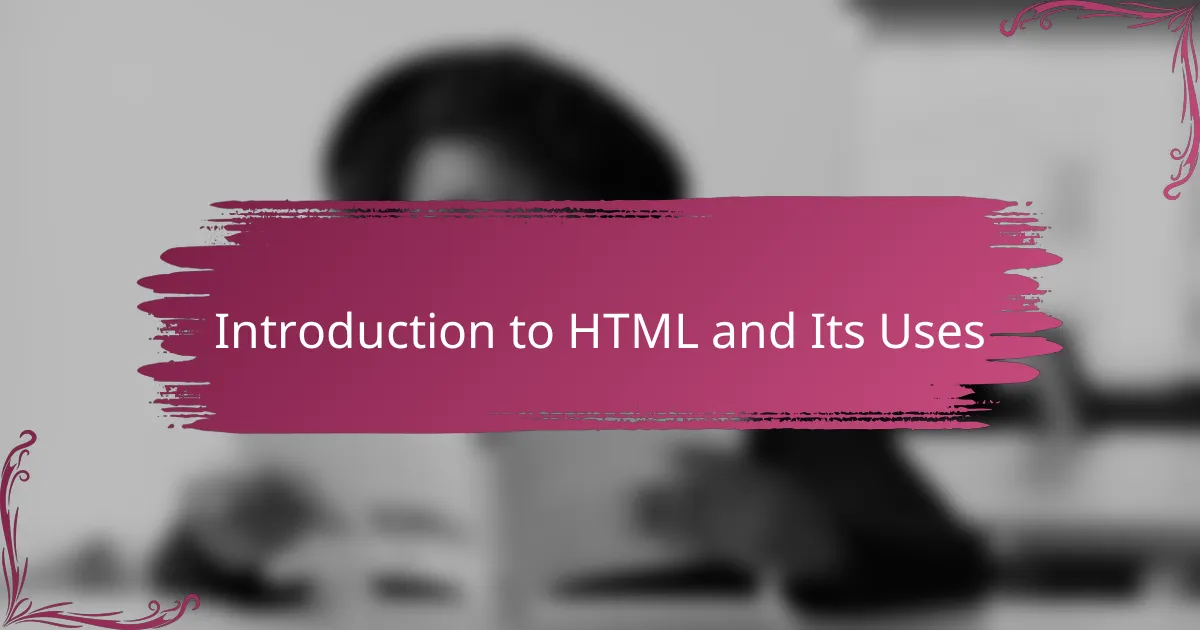
Introduction to HTML and Its Uses
When I first encountered HTML, it felt like learning the secret language of the web. HTML, or HyperText Markup Language, is the very backbone of every webpage you visit. But why does it matter so much? Simply put, HTML structures content, turning plain text into organized, clickable sections that make websites user-friendly and interactive.
I remember feeling amazed as I experimented with HTML tags to create headings, paragraphs, and links. It made me realize how this seemingly simple code controls the presentation and flow of information online. Have you ever wondered how images, lists, and buttons appear perfectly on a page? That’s all thanks to HTML working behind the scenes.
Understanding HTML opened up a new world for me—a world where I could bring ideas to life on the internet. It’s not just about coding; it’s about connecting with people through the digital space. This fundamental language forms the foundation for everything else in web development, making it an essential first step for any aspiring programmer.
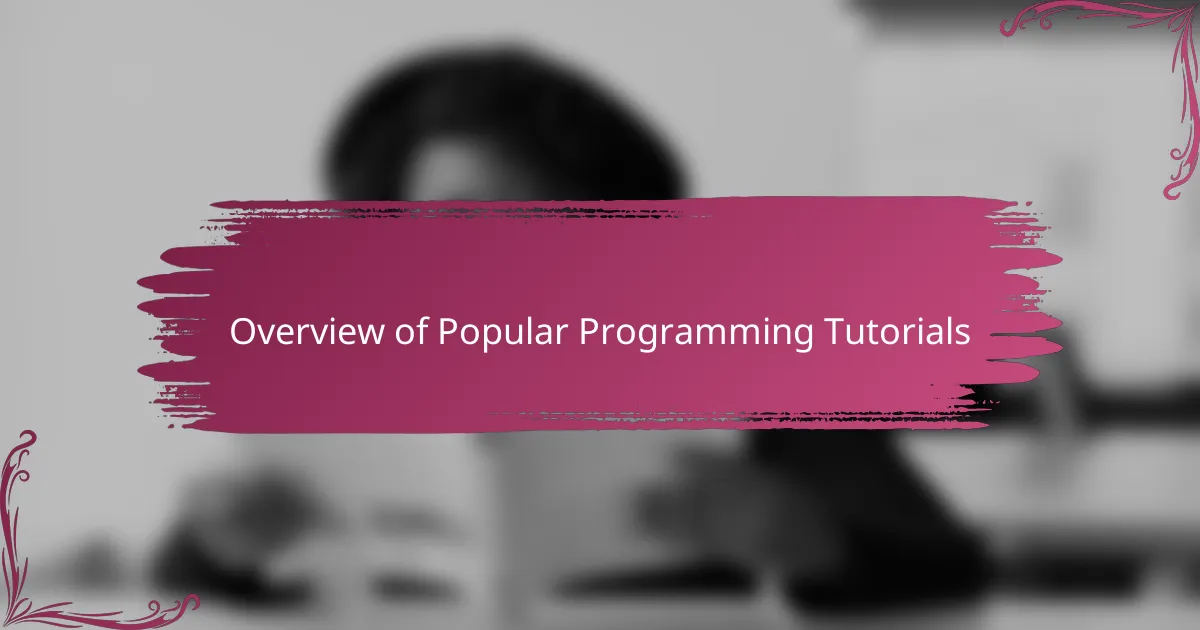
Overview of Popular Programming Tutorials
When I started exploring programming tutorials, I noticed that many popular platforms offer a range of languages and difficulty levels. Websites like Codecademy, freeCodeCamp, and W3Schools stood out because they blend theory with hands-on practice, which I found crucial in keeping me motivated. Have you ever felt stuck reading dense manuals? These tutorials often break things down into manageable chunks that really helped me push through those moments.
What struck me about W3Schools, in particular, was its straightforward approach and immediate feedback through interactive examples. It felt less like a lecture and more like a conversation where I could try things out and see results right away. This kind of learning made coding less intimidating and more accessible, especially for someone just starting like I was.
Of course, every tutorial has its style. Some focus on building projects, while others dive deep into syntax and concepts. From my experience, choosing the right one depends on how you learn best—do you prefer experimentation or careful reading? Understanding this made me appreciate the variety available and how they each support different learning journeys.
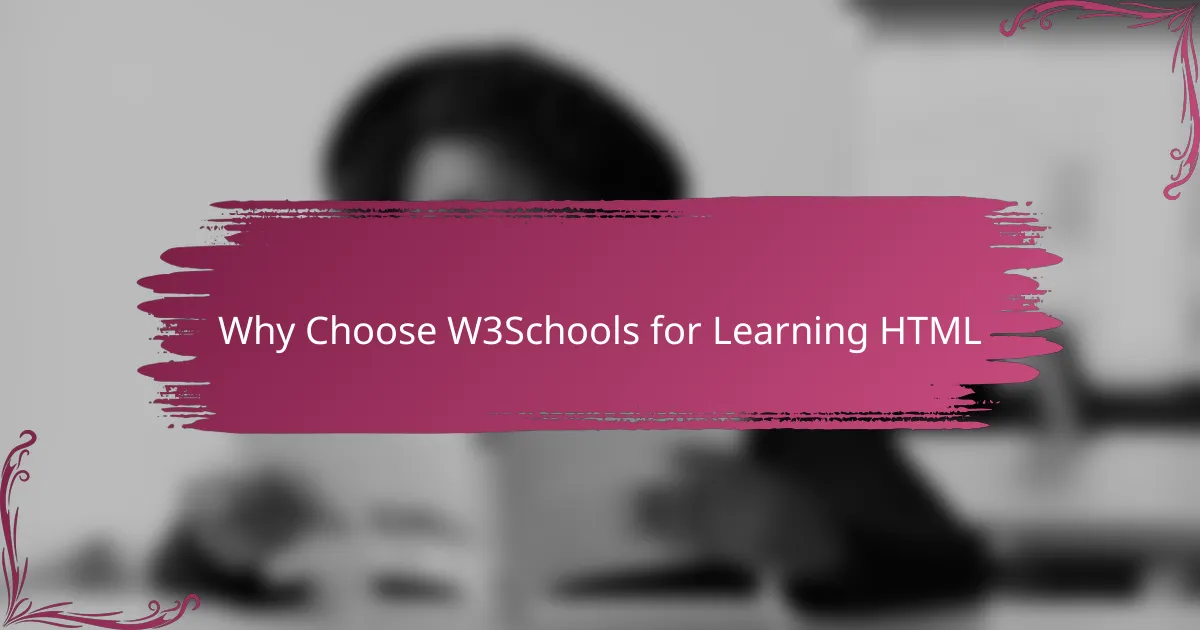
Why Choose W3Schools for Learning HTML
What made W3Schools stand out for me was its simplicity. I didn’t feel overwhelmed by jargon or complex explanations. Instead, the clear, step-by-step lessons made me feel confident from the very first line of code.
Have you ever wished to experiment as you learn? W3Schools lets you do just that with its “Try It Yourself” editor. I loved the instant feedback—it was like having a tutor right there, validating what I was doing and encouraging me to explore more.
Another thing I appreciated was the sheer breadth of content W3Schools offers, all in one place. Whether I needed a quick refresher on tags or a deep dive into forms and attributes, everything was easy to find and understand. This made my learning journey smooth and efficient, which kept me motivated to keep going.
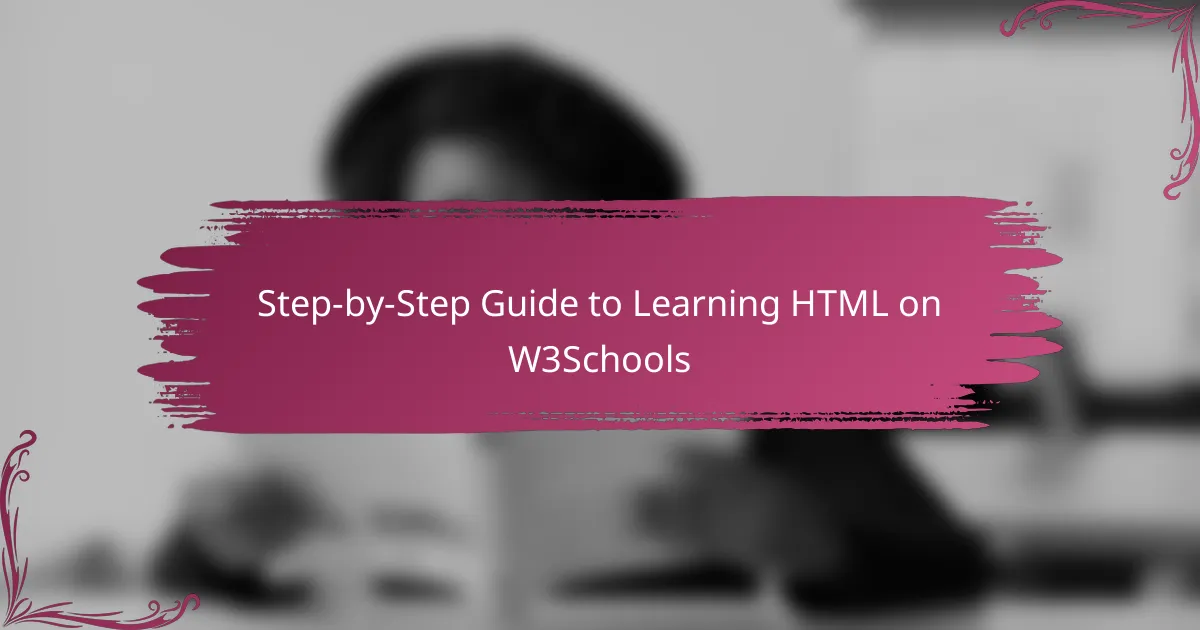
Step-by-Step Guide to Learning HTML on W3Schools
As I jumped into W3Schools’ HTML tutorial, the step-by-step format immediately caught my attention. Each lesson built on the last, starting simple and gradually introducing essential elements like headings, paragraphs, and links. Have you ever found yourself lost in long tutorials? W3Schools’ clear progression helped me stay focused without feeling overwhelmed.
One feature I couldn’t get enough of was the “Try It Yourself” editor. Being able to write code and see the direct results on the same page made learning feel interactive and fun. Sometimes I’d experiment by tweaking tags and instantly see how my page changed—a hands-on experience that made everything click faster than I expected.
Throughout the process, the short explanations and real examples kept me engaged. If I ever forgot what a tag did, I could quickly refer back without losing momentum. This constant accessibility made me feel supported, as if I had a patient teacher guiding me through every small step.
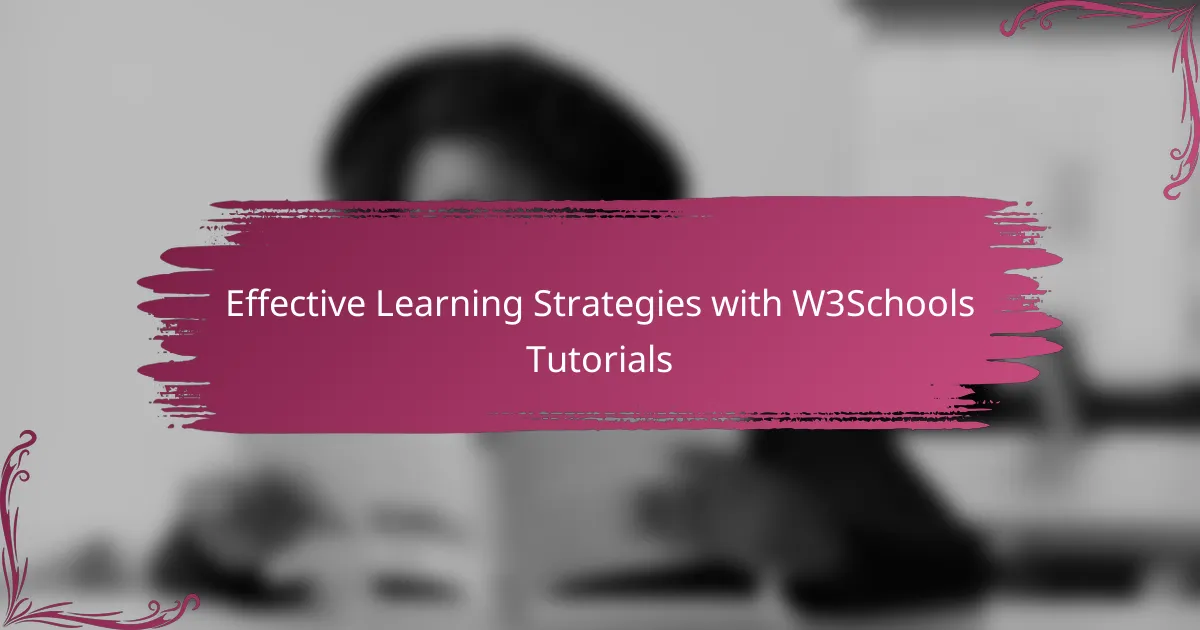
Effective Learning Strategies with W3Schools Tutorials
When I started using W3Schools, I quickly realized that breaking lessons into bite-sized pieces made a huge difference. Instead of feeling overwhelmed by a flood of information, I could focus on mastering one tag or concept at a time. Have you noticed how much easier it is to learn when you don’t feel rushed or pressured? That steady pace kept me engaged and confident.
The “Try It Yourself” feature became my favorite tool. Writing code and seeing instant results felt rewarding and helped me learn by doing, not just reading. I often found myself experimenting beyond the examples, tweaking attributes and structures just to see what would happen—I think that’s where real learning clicked for me.
I also found that revisiting topics frequently helped cement my understanding. W3Schools made it simple to jump back and forth between lessons, so I could review tricky parts whenever I wanted. This flexibility gave me control over my learning, turning frustration into curiosity and making progress feel genuinely achievable.
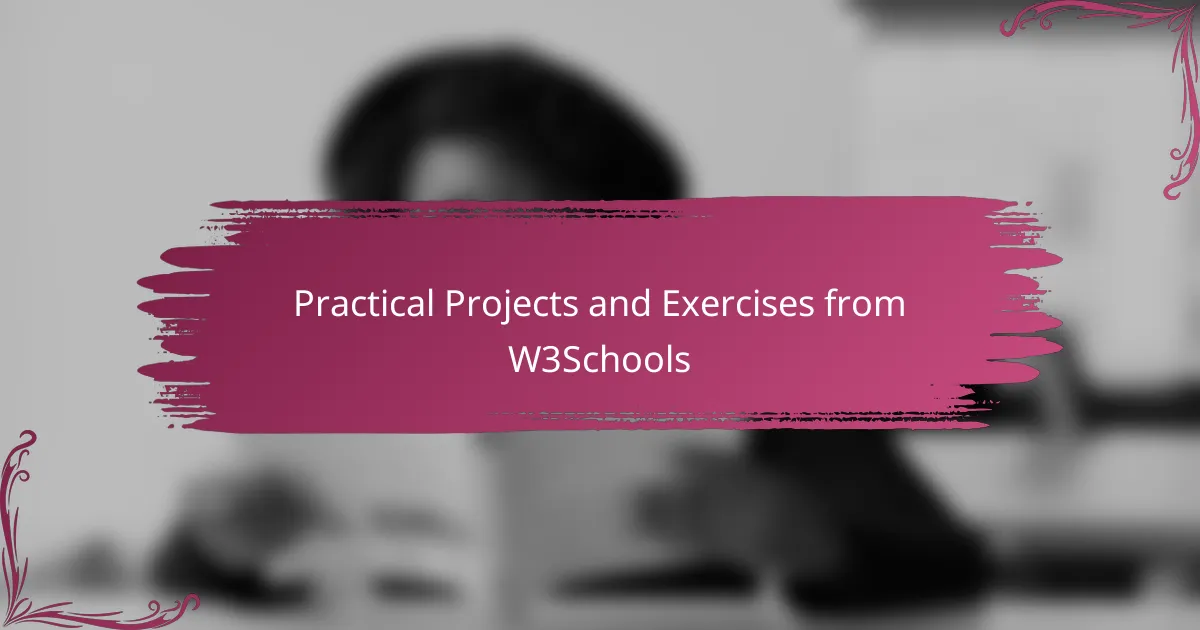
Practical Projects and Exercises from W3Schools
One of the best parts of learning HTML on W3Schools was diving into their practical projects and exercises. These hands-on tasks challenged me to apply what I’d just learned instead of passively reading through examples. Have you ever noticed how much faster you grasp a concept when you build something with your own hands? That’s exactly what these exercises did for me.
Sometimes, I’d spend a little extra time tweaking the sample projects, adding my own touches or experimenting with different tags. It was powerful to see how small changes could transform a webpage’s look and feel. This trial-and-error process made the learning experience personal and engaging—far from the dry tutorials I’d tried before.
What really stuck with me was the sense of accomplishment after completing even simple projects like creating a navigation bar or a contact form. Those small wins boosted my confidence and motivated me to tackle more complex challenges. W3Schools doesn’t just teach you HTML; it invites you to build, explore, and learn by doing—which, in my opinion, is the heart of effective programming education.
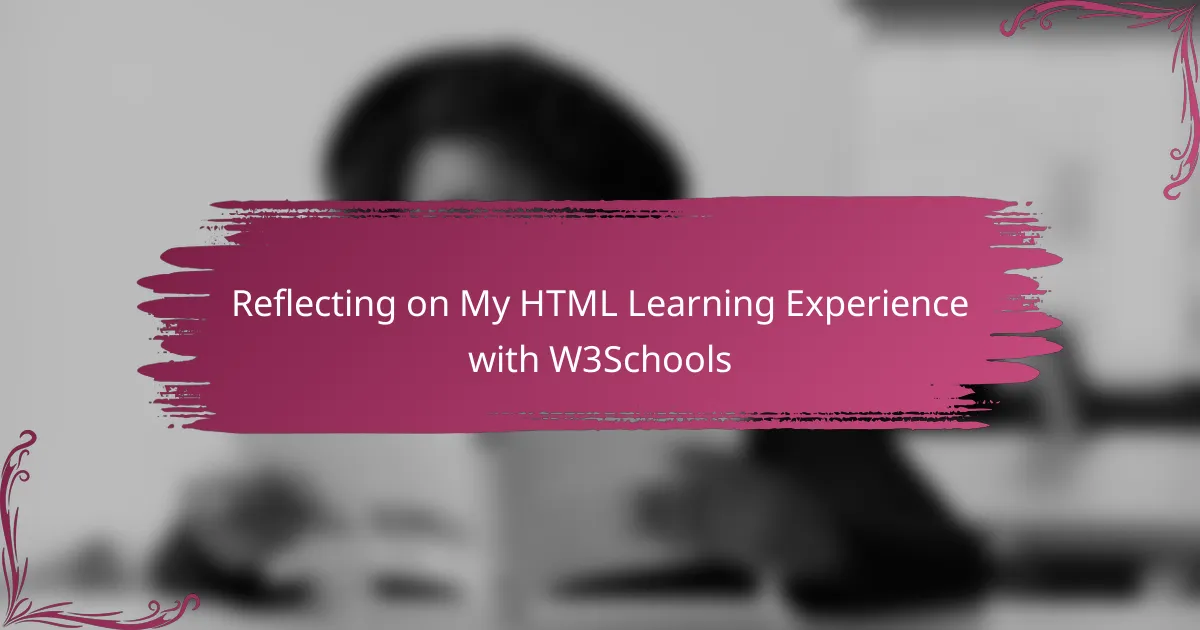
Reflecting on My HTML Learning Experience with W3Schools
Looking back on my time learning HTML with W3Schools, I realize how much that platform shaped my understanding and confidence. I remember moments of genuine excitement when a piece of code I typed actually worked—those small victories kept me going. Have you ever experienced that sudden click when a complex concept suddenly makes sense? W3Schools made that possible for me more than once.
What really stuck with me was how the learning process felt personal and interactive. Instead of passively reading, I was actively creating, experimenting, and seeing instant results, which kept my curiosity alive. I found myself pushing boundaries, wondering, “What if I change this tag?” and then testing it right away—that freedom transformed frustration into fun.
Reflecting on it, I appreciate how W3Schools didn’t just teach me HTML tags; it taught me how to think like a web creator. It’s not just about syntax but about building something that works and looks good. That realization changed how I approach new programming challenges even today.